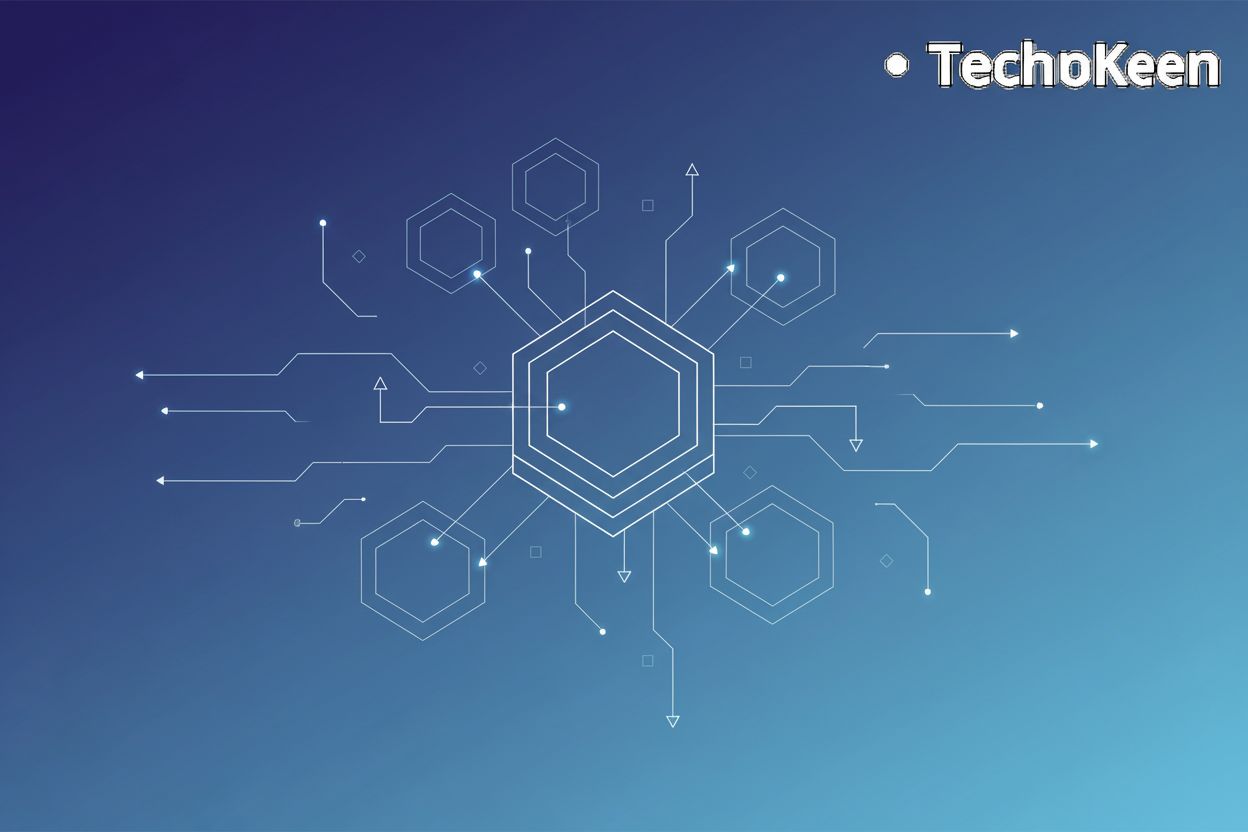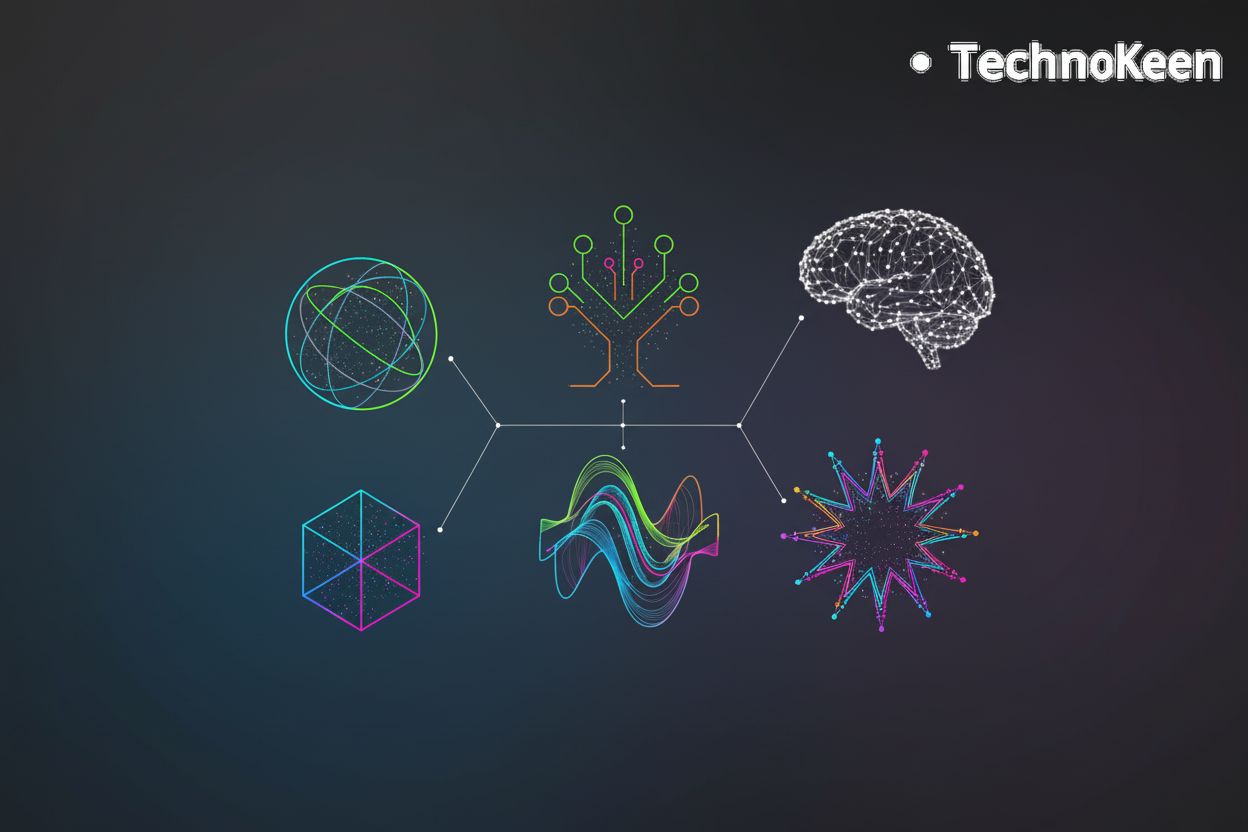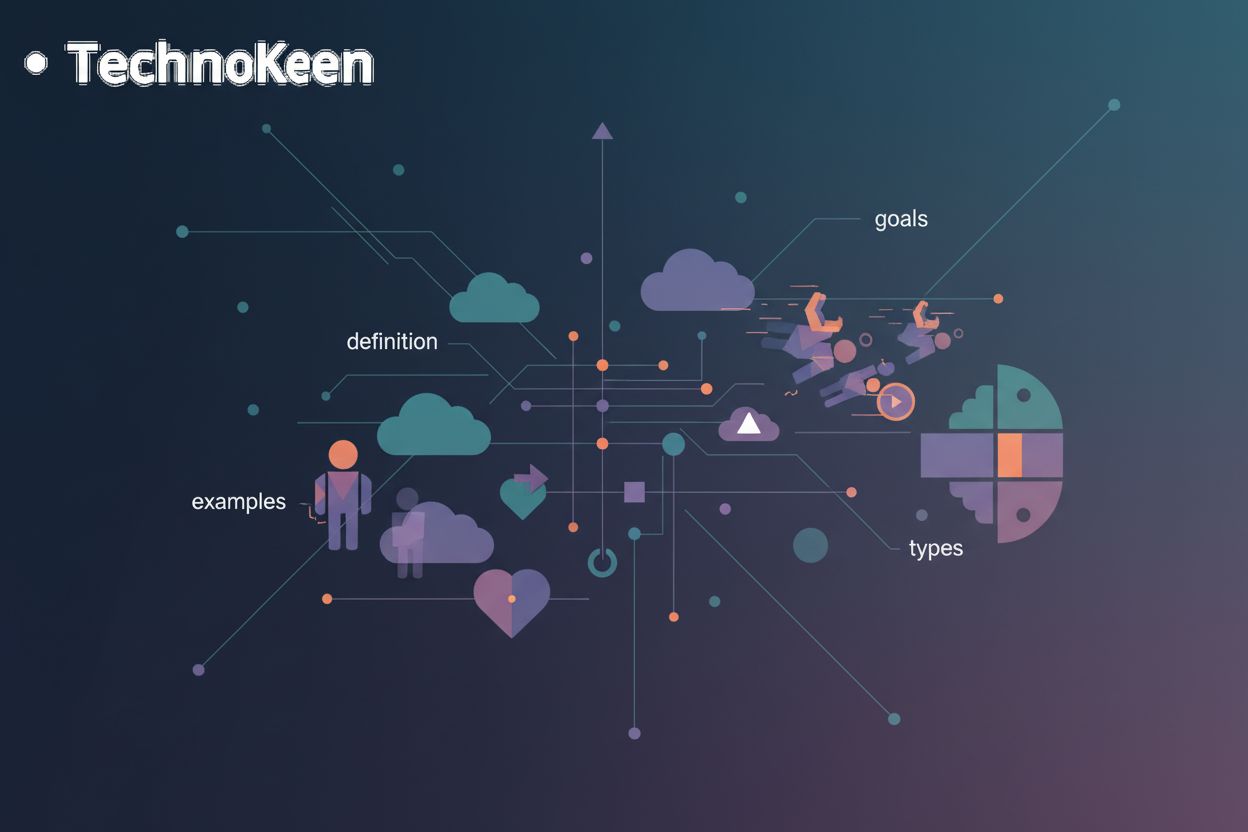Supercharging AI Agents: How Knowledge Graph Integration Drives Intelligent Automation
TL;DR
The Rise of AI Agents and the Challenge of Knowledge Integration
Did you know that ai agents are poised to revolutionize how businesses operate? However, these intelligent systems face a significant hurdle: integrating and processing vast amounts of knowledge effectively.
ai agents are software entities designed to perform tasks autonomously, leveraging ai to make decisions. They are becoming essential for automation across industries.
These agents can transform customer service by providing instant support, boost sales through personalized recommendations, and streamline supply chains with predictive analytics.
The demand for intelligent automation is growing, as companies seek to improve efficiency and reduce operational costs.
ai agents often struggle to access and process relevant knowledge, limiting their effectiveness. They require vast amounts of data to function optimally.
Relying solely on large language models (LLMs) can be problematic. LLMs may lack specific domain expertise or real-time information.
One major issue is "hallucination," where ai generates incorrect or nonsensical information. This highlights the need for reliable knowledge sources.
Knowledge graphs are structured representations of knowledge. They organize information in a way that ai agents can easily understand and utilize.
A knowledge graph consists of nodes (entities), edges (which represent the relationships), and properties (attributes of nodes or edges). These components provide a framework for organizing and contextualizing information.
Knowledge graphs offer benefits, such as improved data organization, enhanced context awareness, and better reasoning capabilities for ai agents.
This diagram illustrates a basic way a knowledge graph can model customer behavior in a retail setting. For instance, we see a customer entity connected to a product entity via a "Purchases" relationship, and that product is then linked to a category. This is just a starting point; real-world graphs can get much more complex, showing things like purchase frequency, product reviews, or even customer demographics.
As we move forward, we’ll explore how knowledge graphs specifically address these challenges and drive more intelligent automation.
Knowledge Graphs vs. Retrieval Augmented Generation (RAG): A Comparative Analysis
Imagine ai agents that not only access information but also understand and reason about it. Knowledge Graphs and Retrieval Augmented Generation (RAG) are two distinct approaches to help ai agents achieve this, each with unique strengths and limitations. Let’s break down how they compare.
RAG enhances Large Language Models (LLMs) by fetching relevant information from external sources. This approach helps LLMs overcome their knowledge limitations and access up-to-date information. RAG systems use a retrieval model to find relevant documents, which are then used to augment the prompt given to the LLM.
- RAG improves LLM accuracy by providing access to current information. LLMs are limited to the data they were trained on, so RAG overcomes this by providing up-to-date information, ensuring responses are current and relevant.
- RAG can handle unstructured data. RAG systems are great at processing large amounts of text, like articles or reports, to find the specific pieces of information needed. While they can also work with structured data, it often involves converting it into a searchable format first, which isn't as inherent as a knowledge graph's approach.
- The accuracy of RAG-based agents heavily relies on the quality of the retrieval model and relevance of the retrieved documents. If the retrieval model fails to find the most relevant documents, the LLM may generate inaccurate or incomplete responses.
Knowledge graphs provide a structured and semantic understanding of data. They capture entities and their relationships, enabling ai agents to understand the meaning and connections between different pieces of information.
- Knowledge graph-based agents can achieve high accuracy in well-defined knowledge domains, as they rely on structured and curated information. This structured approach is particularly beneficial in applications where precision is paramount, such as medical diagnosis or financial analysis.
- Knowledge graphs provide a rich context for understanding relationships between entities, enabling agents to answer complex questions and perform intricate reasoning tasks. This is crucial in domains where understanding the connections between different pieces of information is essential, such as fraud detection or scientific research.
- Knowledge graphs require careful maintenance to ensure accuracy and consistency, especially as new information emerges. This can be a time-consuming and resource-intensive process, particularly for large and complex knowledge graphs.
Imagine a financial analyst using an ai agent to assess investment risks. A knowledge graph could provide a structured view of companies, their relationships (like who owns whom, or which companies supply each other), and market trends, while RAG could supplement this with the latest news articles and analyst reports.
While RAG excels at providing current information by retrieving relevant text snippets, knowledge graphs offer a deeper, structured, semantic understanding that is crucial for complex reasoning and uncovering implicit connections.
The Power of Inference: Unlocking Deeper Insights with Knowledge Graphs
Can you imagine ai agents that not only access information but also reason about it? Inference is the secret ingredient that enables ai agents to move beyond simple data retrieval and unlock deeper insights.
Inference-bearing knowledge graphs empower ai agents to perform logical deductions. They enable the agents to infer implicit relationships and draw conclusions from interconnected facts, even when those connections aren't explicitly stated.
- These knowledge graphs allow ai agents to go beyond simple lookups. Instead, they can perform logical deductions, infer implicit relationships, and draw conclusions from interconnected facts.
- With this type of knowledge graph, ai agents can infer relationships that are not directly stated. This is crucial for complex reasoning and uncovering hidden patterns in the data.
Inference unlocks powerful reasoning capabilities within ai agents. Let's look at some examples.
- Transitive relations: If "Component A is part of Subsystem B," and "Subsystem B is critical for Function C," the agent can infer that "Component A is critical for Function C." This is like a chain reaction of logic.
- Property inheritance: An ai agent can apply rules to specific instances. For example, if "All 5G IoT Devices require AES-256 encryption," and "New Smart Meter Model D is a 5G IoT Device," the agent infers that "New Smart Meter Model D requires AES-256 encryption." It inherits the property.
- Constraint checking: ai agents can identify violations of predefined rules. If a rule states, "Any device handling sensitive personal data must comply with GDPR," the graph can infer a violation if a device collects such data but lacks compliance flags.
Ontologies play a vital role in this process by defining relationships and rules within the knowledge graph. For example, an ontology might define that if something is a "parent" of something else, it is also an "ancestor." This formal semantic definition, along with axioms and rules, gives the inference engine the logical framework it needs to derive new knowledge.
Inference-bearing knowledge graphs provide a clear reasoning path for ai agent decisions. This explainability is crucial for auditing and building trust in ai systems.
- Inference-bearing knowledge graphs offer a significant advantage: explainability. Unlike black-box LLMs, these graphs can show the "reasoning path" behind an ai agent's decision.
- This transparency is essential for building trust in ai systems. It also supports compliance in regulated industries, where explainability is often a legal requirement.
By providing this level of transparency, inference connects directly to explainable ai (XAI).
Now that we’ve explored the power of inference, let’s delve into how to build and maintain knowledge graphs for ai agents.
Building Your Knowledge Graph: A Step-by-Step Guide
Ready to build a knowledge graph for your ai agents? Here’s a step-by-step guide to get you started.
First, link your knowledge graph initiative to specific business goals. Identify and gather all relevant data sources, including legacy systems, documents, and expert insights. This ensures you have a comprehensive foundation for your knowledge graph.
- Define Clear Objectives: Start by understanding why you need a knowledge graph. What specific business problems will it solve? This guides your entire process.
- Data Discovery and Ingestion: Identify and gather all relevant data sources. This could be structured data from databases, unstructured text from documents, or even expert knowledge captured in interviews. Tools like ETL (Extract, Transform, Load) pipelines or specialized graph ingestion tools can help.
- Establish a Solid Foundation: Ensure you're collecting all the necessary data to build a comprehensive knowledge graph that truly reflects your domain.
Next, you'll need to design the structure of your knowledge graph. Refine your vocabulary, eliminate ambiguities, and organize concepts into clear hierarchies. This makes it easier for ai agents to navigate and understand the relationships between different pieces of information.
- Ontology Design and Vocabulary Refinement: Define your core concepts (entities) and the types of relationships between them. Use controlled vocabularies or thesauri (like SKOS) to standardize terms and avoid synonyms causing confusion. For example, instead of "car" and "automobile," pick one standard term.
- Disambiguation: Address ambiguities head-on. If a term like "Apple" could refer to the fruit or the company, use unique identifiers or context-aware rules to ensure the correct meaning is captured. This is a critical step often overlooked.
- Hierarchical Organization: Structure your concepts into clear hierarchies, like taxonomies (e.g., "Vehicle" -> "Car" -> "Sedan") or folksonomies (user-generated tags). This helps in browsing and understanding relationships.
Focus on ensuring your data is clean and accurate, addressing synonyms, misspellings, and variations. Build the logical framework (ontology) by defining entities, properties, and relationships. This enhances the context for ai applications through structured approaches.
- Data Cleaning and Harmonization: Ensure your data is accurate and consistent. This involves handling synonyms, misspellings, and variations in how information is represented. Tools for data profiling and deduplication are useful here.
- Building the Logical Framework (Ontology): Define your entities (e.g., "Person," "Company," "Product"), their properties (e.g., "Person" has "name," "age"; "Company" has "industry," "revenue"), and the relationships between them (e.g., "Person" "works_for" "Company").
- Enhancing Context for AI: This structured approach provides rich context that ai applications can leverage for more intelligent decision-making and understanding.
Now that you have a solid foundation, the next step is to populate your knowledge graph with data.
Integrating Knowledge Graphs with AI Agent Workflows
ai agents are transforming how businesses operate, but integrating them into existing workflows can be tricky. Knowledge graphs streamline this process by providing a structured way to manage and access information.
Knowledge graphs play a pivotal role in streamlining ai agent workflows. They act as a central repository of structured knowledge, enabling ai agents to access and process information efficiently.
- Knowledge graphs facilitate ai agent orchestration by providing a clear and consistent framework for data access and task dependency management. For example, an agent needing to process a customer order might query the knowledge graph to identify the customer's profile, their past purchases, and the current inventory status, all before initiating the fulfillment process. This structured data allows for more predictable and coordinated agent actions.
- Integrating knowledge graphs into ai agent platforms and frameworks like LangChain or Auto-GPT allows developers to build more intelligent and context-aware applications. This integration simplifies the development process and improves the overall performance of ai agents by providing them with a robust knowledge base. For instance, within LangChain, a knowledge graph can be used as a memory component or a tool for agents to query.
- By leveraging knowledge-driven insights, ai agents can automate tasks and decision-making processes. For example, in supply chain management, ai agents can use knowledge graphs to predict potential disruptions by analyzing relationships between suppliers, logistics routes, and weather patterns, and then automatically adjust logistics based on these inferred risks.
This diagram illustrates how data sources are used to construct a knowledge graph, which then feeds into an ai agent platform for task automation and decision support. The platform can query the graph to understand relationships, infer new information, and then use that to drive actions or provide insights.
ai agent deployments raise significant security concerns. Implementing robust access control and authentication mechanisms for knowledge graph data is essential to protect sensitive information.
- Access control ensures that only authorized ai agents can access specific parts of the knowledge graph. This prevents unauthorized access and protects sensitive data. For example, a customer service agent might only access customer contact information, while a fraud detection agent has access to transaction history and risk scores.
- Authentication verifies the identity of ai agents before granting access to the knowledge graph. This helps prevent malicious actors from impersonating legitimate agents.
- Compliance with data privacy regulations like GDPR and CCPA is crucial. Knowledge graphs must be designed to adhere to these regulations, ensuring that personal data is handled responsibly and with appropriate consent.
Tracking ai agent performance is crucial for ensuring efficiency and scalability. Knowledge graph metrics provide valuable insights into how well ai agents are performing.
- Knowledge graph metrics help track ai agent performance. These metrics include query response time, data coverage, and the accuracy of inferences. For example, measuring how quickly an agent can retrieve relevant product information from the graph.
- Optimizing knowledge graph queries enhances efficiency and scalability. Efficient queries ensure that ai agents can quickly access the information they need without slowing down the system.
- Ensuring high availability and reliability of knowledge graph services is vital for uninterrupted ai agent operations. This involves implementing robust infrastructure and failover mechanisms.
As we move forward, we will explore the ethical considerations surrounding the use of ai agents and knowledge graphs.
Real-World Use Cases: Knowledge Graph Integration in Action
ai agents augmented with knowledge graphs are transforming industries. Let's explore how this integration is playing out in the real world.
Knowledge graphs help ai agents infer complex, hidden risks by deducing subtle connections not obvious in raw data. These agents can flag potential fraud or non-compliance by tracing inferred relationships across seemingly disparate entities. For example, a financial services knowledge graph might link a suspicious transaction to an account flagged for money laundering, which is then linked to an individual with a history of financial crime, even if these connections weren't directly stated. This leads to improved accuracy and efficiency in risk assessment and regulatory reporting.
In healthcare, ai agents use knowledge graphs to infer optimal treatment pathways. They consider a patient's full medical history, genetics, and the latest research. By recommending alternatives based on complex inferred interactions between drugs, conditions, and patient biomarkers, these agents personalize treatment and improve safety, enhancing decision-making for healthcare professionals. For instance, inferring that a particular drug might have an adverse interaction with a patient's genetic predisposition, even if that specific interaction isn't in a standard drug database.
ai agents leverage knowledge graphs to infer potential disruptions from cascading effects across the entire supply chain. By deducing impacts on seemingly unrelated products or components due to a single supplier issue, these agents identify alternative sourcing options by inferring similar properties of other suppliers or logistics routes. This enables proactive adjustments and minimizes supply chain risks. For example, if a key component supplier is affected by a natural disaster, the graph can infer which finished products are most at risk and suggest alternative suppliers based on their capacity and location.
These examples show the transformative power of knowledge graph integration. Next, we will explore the ethical considerations surrounding the use of ai agents and knowledge graphs.
The Future of AI Agents: Towards Intelligent and Autonomous Systems
ai agents are rapidly advancing, promising a future where systems operate with increasing intelligence and autonomy. But what does this future look like, and how do knowledge graphs play a role?
ai agents are moving beyond simple task execution. The shift hinges on their ability to reason, learn, and adapt, driven by inference-bearing knowledge graphs.
- These graphs enable ai agents to understand complex situations and deduce implications, leading to more informed decisions.
- ai agents can continually incorporate new facts and relationships, allowing them to grow smarter over time.
- With enhanced reasoning, ai agents operate with greater autonomy and precision, reducing the need for constant human oversight.
Inference-bearing knowledge graphs provide the cognitive structure for ai agents to excel in dynamic environments. With knowledge graphs, ai agents can:
- Reason about complex, ambiguous situations.
- Learn and adapt more effectively by continually incorporating new facts and relationships.
- Operate with greater autonomy and precision, making more robust, trustworthy decisions.
- Provide explainable outcomes, crucial for auditability and building confidence in ai systems.
As ai agents evolve, inference-bearing knowledge graphs are becoming a key differentiator for generative ai platforms. They help improve factual accuracy, reduce hallucinations, and provide a deeper contextual understanding for generated content, making the output more reliable and relevant.
- Partner with a provider proven in deploying scalable solutions in demanding environments.
- Accuracy, security, data privacy, and scalability are paramount.
- By focusing on these areas, businesses can harness the full potential of ai agents.
The future of ai agents lies in their ability to learn, reason, and adapt, driven by knowledge graphs.






